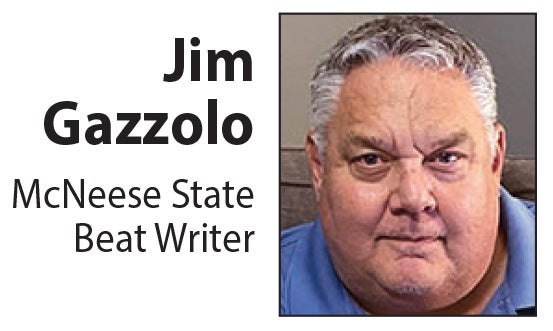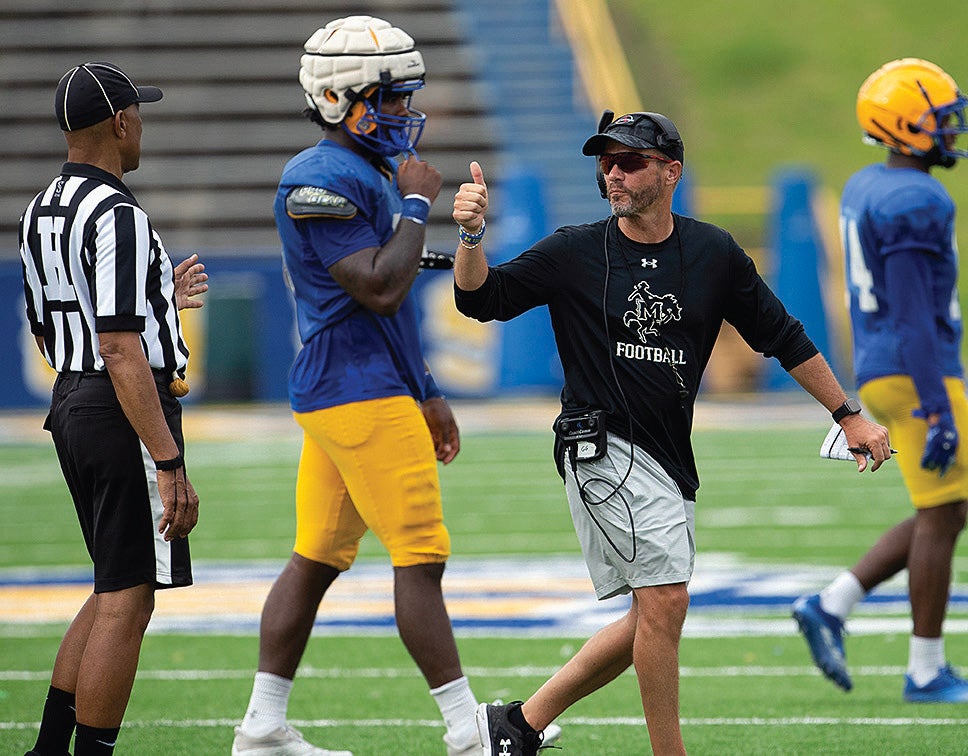Scooter Hobbs column: To know Saban is to respect him
Published 11:00 am Friday, January 12, 2024
It goes without saying that Nick Saban was the best who ever did it in college football.
No need to rehash that here after his retirement.
But the first time I met him, he was not yet the GOAT, just a promising, up-and-coming coach.
This would have been in Shreveport, a couple of days before the 1995 Independence Bowl between LSU and Saban’s Michigan State team.
The Spartans had set up an informal breakfast for a handful of Louisiana writers to chat with Saban at the team’s hotel. The restaurant was crowded, as I recall, but our table didn’t really attract much gawking among the other patrons and it was a peaceful exchange.
Imagine trying that today.
But I must say I was immediately blown away by the guy. It was obvious to me then that he was something special — calm and focused, but totally, if nonchalantly, controlling the table — and my opinion didn’t really change after LSU handled Michigan State 45-24 in the game.
So it was no huge surprise four years later when he was introduced as LSU’s next head coach.
I wasn’t quite so smart for that one, though.
I thought he bombed in his introductory news conference.
He didn’t bite on any of the softball questions typically lobbed for such affairs — among other things, he said he didn’t really know, yet, if LSU had the best fans in the world, but he’d get back to everybody on it at some point.
My column the next day described the whole thing as “underwhelming,” mainly wondering if LSU was “spending money like drunken sailors” with the unheard of contract of $1.3 million a year for an unproven commodity.
“For that kind of money,” I wrote, stupidly, “you want them to knock your socks off. You want them to dazzle you and excite you and spark impromptu pep rallies.”
It was only later that I learned that Saban hadn’t slept in like 48 hours before his Louisiana introduction and I realized how wrong my first LSU impression of him was long before he coached his first game with the Tigers.
The spring game that year, by chance, I got chosen to be one of the honorary media coaches. I figured it was a loose affair, and at halftime I was chatting up assistants Pete Jenkins and Jimbo Fisher, both of whom I already knew.
Saban was the “commissioner” for the game and all frivolity ceased when he walked up and entered our powwow. I was spared, but he immediately unfurled a laundry list of miscues and oversights he didn’t like in the first half and unmercifully chewed out the real coaches.
This was a spring game. He even let me cheat, to no avail, with an onside kick even though such trickery was banned for the game.
But it let you know he was serious.
His most memorable postgame news conference came immediately after the famous “Bluegrass Miracle” at Kentucky.
He didn’t seem anything like a winning coach. He was not giving back the unlikely victory, but I don’t think I’ve ever seen him so annoyed, all but disgusted, all but apologizing to the Wildcats for winning on a Hail Mary that negated a lot of sloppy play. It was like he considered it a dirty victory.
It was not long after he complained immediately after winning the 2003 national championship that he had to figure out how to do it again, that I was convinced that he’d never leave LSU.
The NFL was openly after him by then, but one day in an informal chat he explained what he didn’t like about the pros.
I’ll have to paraphrase here, but basically he said that in college they recruit a guy and spend 3-4 years, day by day, trying to improve him enough to win championships. Conversely, he explained, in the pros they get a player and immediately start trying to figure out where they can find and acquire somebody better.
That sounds a lot like the current state of college football and you wonder if, even for a coach known for evolving with the times, it led to his retirement.
But he did eventually go to the Miami Dolphins, of course.
Yet those who say that’s when LSU fans turned on him forget 2005 when his Dolphins went to Tiger Stadium to play the Saints, who were borrowing his onetime stomping grounds in the wake of Hurricane Katrina’s destruction of the Superdome.
Saban got a rousing welcome back to Louisiana that day. The fans even chanted his name.
No, it was not leaving LSU that turned him into Public Enemy No. 1. It was only when he came back to the SEC at Alabama that he raised the ire of the purple and gold.
LSU was a much better job at the time (much by his doing). I always tried to explain to LSU fans that by coming back he was admitting that he made a mistake by leaving Baton Rouge.
I was shocked that first year when Les Miles’ eventual national champion LSU team traveled to Tuscaloosa.
LSU was a much better team than the dumpster fire Saban had inherited at Bama. But the Tigers were sloppy with three interceptions and 14 penalties, not to mention giving up a punt return score. LSU won on a late Jacob Hester touchdown, but it was a game Bama had every chance to steal.
I knew the competitive Saban well by then. Even went to the Bama postgame news conference that day instead of LSU’s … and I was shocked. He didn’t seem to be the least bit annoyed to have a let a major upset slip away.
He went on and on about how he enjoyed seeing Hester and some of the other LSU players he’d recruited.
He spotted me on the front row of the news conference and asked the Alabama writers if they knew me. When some admitted friendship, he jokingly related the story of how he’d let me cheat in that LSU spring game a few years earlier.
Totally out of character.
It would get much tougher to beat Saban after that first year at Bama, of course. And far more frustrating.
But even LSU fans, I suspect, will miss him. You knew you were up against the best that ever was. On the odd chance when you beat him, as the SEC saying goes, It Just Means More.
—
Scooter Hobbs covers LSU athletics. Email him at scooter.hobbs@americanpress.com






